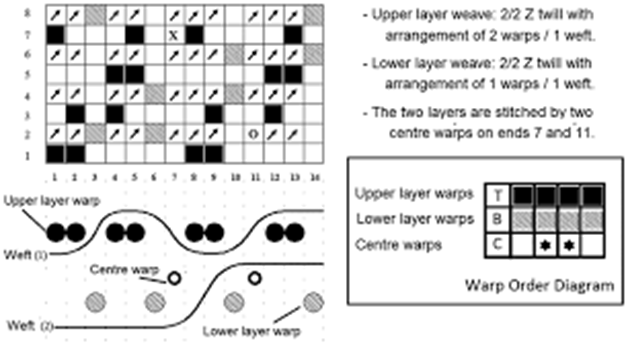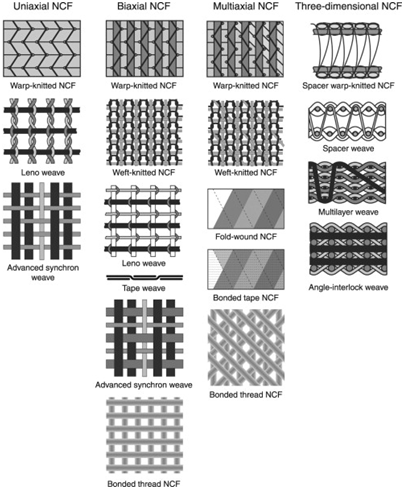Multi-Layer Fabrics: the art of weaving several layers in a fabric
Multi-layer fabrics - design, properties, and concepts
A multilayer fabric with woven layers consists of a number of woven layers stacked on top of each other and held together with connection yarns in the third dimension (Z-direction).
Detailed weaving structure of multilayer woven fabric
Vinyl Tarpaulin (Technical Fabric) Part – 2
Raw materials utilization, yarn specifications and properties, weaving production procedures of Vinyl Tarpaulin Fabrics
-
Non Crimp yarn layers
A multilayer fabric with non-crimp layers consists of unidirectional layers stacked on top of each other. The stacking can be in 0-degree direction or a combination in 0- and 90-degree direction. The whole package is then held together by connection yarns in the third dimension.
-
Woven layers
A multilayer fabric with woven layers consists of a number of woven layers stacked on top of each other and held together with connection yarns in the third dimension (Z-direction). The geometry of the woven layers can be customized.
-
Interlocking
A multilayer fabric with interlocking is not kept together with an extra connection yarn system in the third dimension. The interlocking happens as the warp and/or weft yarns are switched between the different layers. The transition of the warp and weft yarns can be customized according to the application.
-
Combination
A combined multilayer fabric is a combination of different types of multilayer fabrics. This can be for example a multilayer fabric with NC layers except for the outer layers which are woven layers and can be interlocked.
-
Tubular fabrics
A tubular fabric is characterized by the hollow spaces in the 3D woven fabric. These hollow spaces can be customized in shape and dimension. The surfaces can be profiled or flat each with several different connection possibilities. With profiled faces oblique or oblique in combination with horizontal connections (for example a honeycomb structure) are possible.
Flat surfaces can have vertical connections, oblique connections or a combination of oblique and horizontal connections. These openings can be used for utilities, can be filled with reinforcement matrix, with foam…
It is possible to combine different yarn types in one woven fabric. Different layers can consist of other yarns but also within one woven layer periodically another yarn type can be used.
-
Pile fabrics
A pile fabric consists of a woven layer with perpendicular cut pile yarns as with normal velvet.
-
Loop pile fabrics
A loop pile fabric consists of a woven layer with perpendicular loops of pile yarns.
-
Complex fabrics
This category includes all woven fabrics that cannot be divided into five main categories. The woven fabrics can be a combination of different techniques, a jacquard woven fabric or an asymmetrical woven fabric.







